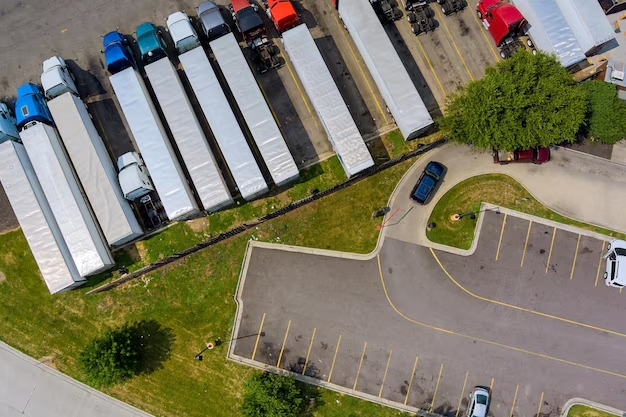Choosing a Truck for Transportation: What Actually Matters


Choosing a truck sounds simple. You’ve got cargo, you need to move it. Pick a truck, load it up, go. Except... that’s not how it plays out, is it? One wrong call and you’re stuck with a half-empty trailer, a driver cursing under his breath, or worse—a rejected load because the truck doesn’t meet the requirements. (Happens more often than we’d like to admit. And yes, sometimes it's done last minute.)
So—how do you actually choose the right truck for transportation, without turning it into a guessing game or a five-hour spreadsheet session? Let’s break it down.
1. What exactly are you hauling? (No, really—be specific)
Before you even think about axle types or load capacity, ask the basic question: What’s inside the box? Pallets? Loose cargo? Something fragile or oddly shaped (hello, nightmare freight)? Perishables that need cooling?
Because trust me—“general cargo” isn’t specific enough when you’re trying to pick between a curtain-sider, a box truck, and a refrigerated trailer. One size does not fit all here.
2. How heavy is it?
Gross weight matters. A lot. Too heavy, and you’re not just risking a fine—you might not move at all. Too light for the truck you’ve chosen? Congratulations, you just paid to haul air.
A good rule of thumb:
- Small loads (under 1.5 tons): Think vans or light-duty trucks
- Mid-sized (up to 10 tons): 2-axle rigid trucks
- Big league (20+ tons): Go full semi-trailer or articulated truck
Weight affects route planning too. Some bridges, tunnels, and roads won’t even let heavy vehicles through. Annoying, but true.
3. Volume vs. weight: Which one’s your enemy today?
Sometimes you run out of space before you run out of payload capacity. Other times it’s the opposite. If you're moving foam mattresses? You’ll hit volume limits first. Construction materials? Probably weight. So ask yourself: What’s more likely to max out—the kilos or the cubic meters? The answer changes everything.
4. Open or closed body?
Quick quiz:
- Need side loading at a chaotic warehouse? → Curtain-sider or flatbed.
- High-value goods that need to stay dry and locked? → Closed box truck.
- Delivering to grocery stores? → Refrigerated van or reefer trailer.
This isn’t just about preference—it’s about where and how you’re loading. Forklift access, dock height, crane loading... it all plays in.
5. Distance and route type
City deliveries vs. cross-country hauls—totally different animals. Short urban runs? Go light, nimble, fuel-efficient. Think sprinter vans or light rigids. Long hauls? Comfort matters. Engine power matters.
Fuel tank size matters. (Your drivers will thank you for not putting them in a sardine can on a 900 km trip.) Also: narrow streets, low-clearance tunnels, border checks—your route shapes your choice more than you think.
6. Legal stuff and regs (sorry, but you can’t skip it)
- Does the cargo need ADR compliance?
- Are there weight limits on certain roads in your region?
- Is the driver certified for what you’re moving?
It’s not the fun part. But it’s the part that bites you when you forget it.
7. Budget. Always the budget.
Sure, everyone wants a shiny new Volvo FH16 with all the bells and whistles. But sometimes, practicality wins.
Ask:
- Will a smaller truck with two trips be cheaper than a big one half-loaded?
- Is renting smarter than owning for this lane?
- What about fuel economy, maintenance, or toll costs?
A truck is only “right” if it makes financial sense and gets the job done.
Quick sanity checklist before you book:
- Is the truck type right for the load?
- Can it legally carry the weight + volume?
- Is it compatible with loading/unloading points?
- Will it survive the route (and will the driver)?
- Are all legal boxes ticked?
Choosing the right truck is part logic, part experience, and part “what went wrong last time.” And sometimes, it’s just asking the driver what they’d recommend—they’ve seen it all.

